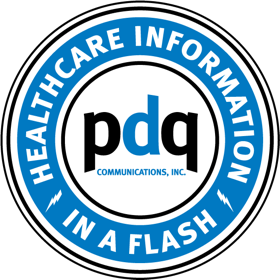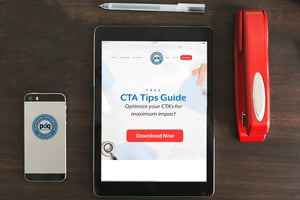Conveying a message that will resonate with healthcare professionals (HCPs) must include specific,...
The healthcare Industry is evolving at a more rapid pace than perhaps any other time in its history. We are seeing a shift in both patient and physician behaviors, amazing advancements in medical device innovation, and a general change in the tendencies and priorities of healthcare providers (HCPs).
When it comes to marketing in this rapidly shifting sector, the need to engage has never been more of a challenge. Below are four areas of focus to help you cut through the clutter, and speak directly and more effectively to your target audience, today’s healthcare professional.
Going Beyond Personalization
You’ve undoubtedly seen the numbers regarding the effectiveness of personalized marketing experiences—they are hard to ignore. A recent study by marketing research firm Epsilon suggests 80% of customers are more likely to purchase a product or service from a brand that provides personalized experiences. Clearly, the days of batch and blast are long gone.
However, as impressive as these statistics are, far too many brands are relying on basic forms of personalization, such as first names in an email subject line, and your clients have moved far beyond these rather stale marketing tactics.
Today, personalization means content that informs and engages a specific audience, and to deliver this you need to truly know your clients’ needs and understand exactly what they’re looking for. The right strategy is one that focuses on engagement. Providing educational content about healthcare industry trends, innovative techniques, and new technology transforms you from a company trying to sell something, into a trusted source they will look forward to hearing from.
Providing real value has taken over, and this notion of becoming an “information partner” is having impactful results. If your current strategy is centered around simply pushing your product and your brand, it needs some major rethinking.
Emotional Rescue
Seeing as the healthcare sector is an emotionally driven industry, it only stands to reason that speaking to this fact in your marketing materials is an effective way to communicate with your audience. Leaving a lasting first impression is vital to the success of your efforts. Playing on emotion can be an extremely effective way to do this.
An excellent example of successful emotional marketing was a spot consumer goods corporation Procter & Gamble ran just before the start of the Sochi Winter Olympics in 2014, titled “Thank You Mom.” With the target audience clearly mothers, P&G told the story of how several famous Olympians never forgot the support they received from their moms as children, and how it ultimately helped lead each to Olympic greatness.
This campaign worked because P&G defined the intended audience, told an engaging and emotional story about their vital roles in the future success of their kids, and subtly and successfully marketed products around that emotion.
Cut to the Chase
The pace of everyday work life has only increased for HCPs, so it’s become imperative you don’t bury the lead in your email messages. Get to the point, be wary of misleading subject lines, make sure the reason you sent your message is apparent in the first sentence of your emails, and then funnel that reader toward your CTA...quickly.
For busy HCPs, consuming content is often done on the fly, so be sure to focus on concise and quickly digestible messages. As you’ll read below, healthcare professionals have become heavy mobile users, so it’s more important than ever to use short subject lines, limited body copy, headers and bullet points, whenever possible.
Mobile Madness
Simply stated, HCPs are now forever on their smartphones, as the devices have become a mainstay in clinical settings. According to a recent survey by market advisory firm Spyglass Consulting Group, 90% of the hospitals queried claimed to have made, or are planning to make, significant investments in smartphones and secure mobile communications platforms.
Add to this the fact 68% of email campaigns are now being opened on mobile devices, and it’s clear how important it is that your digital marketing efforts be mobile friendly. As aforementioned, shortening subject lines to roughly 40 characters and ensuring your call to action isn’t hidden away, but rather prominent and set apart from the rest of the text, is vital.
Lastly, consider using preheader text—a short, descriptive summary after the subject line, viewable within inboxes—as this is what your target audience will see before opening their email. The importance of a solid preheader is frequently overlooked, but often the difference in whether or not your email is opened. Make this text count, because when preheaders are done right, they can be gold.
The healthcare landscape for HCPs is now all about anytime, anywhere communications—and your marketing efforts need to follow suit.
Cutting through the clutter and immediately engaging your target audience is something PDQ Communications specializes in, so put our proven healthcare network to work for you.








